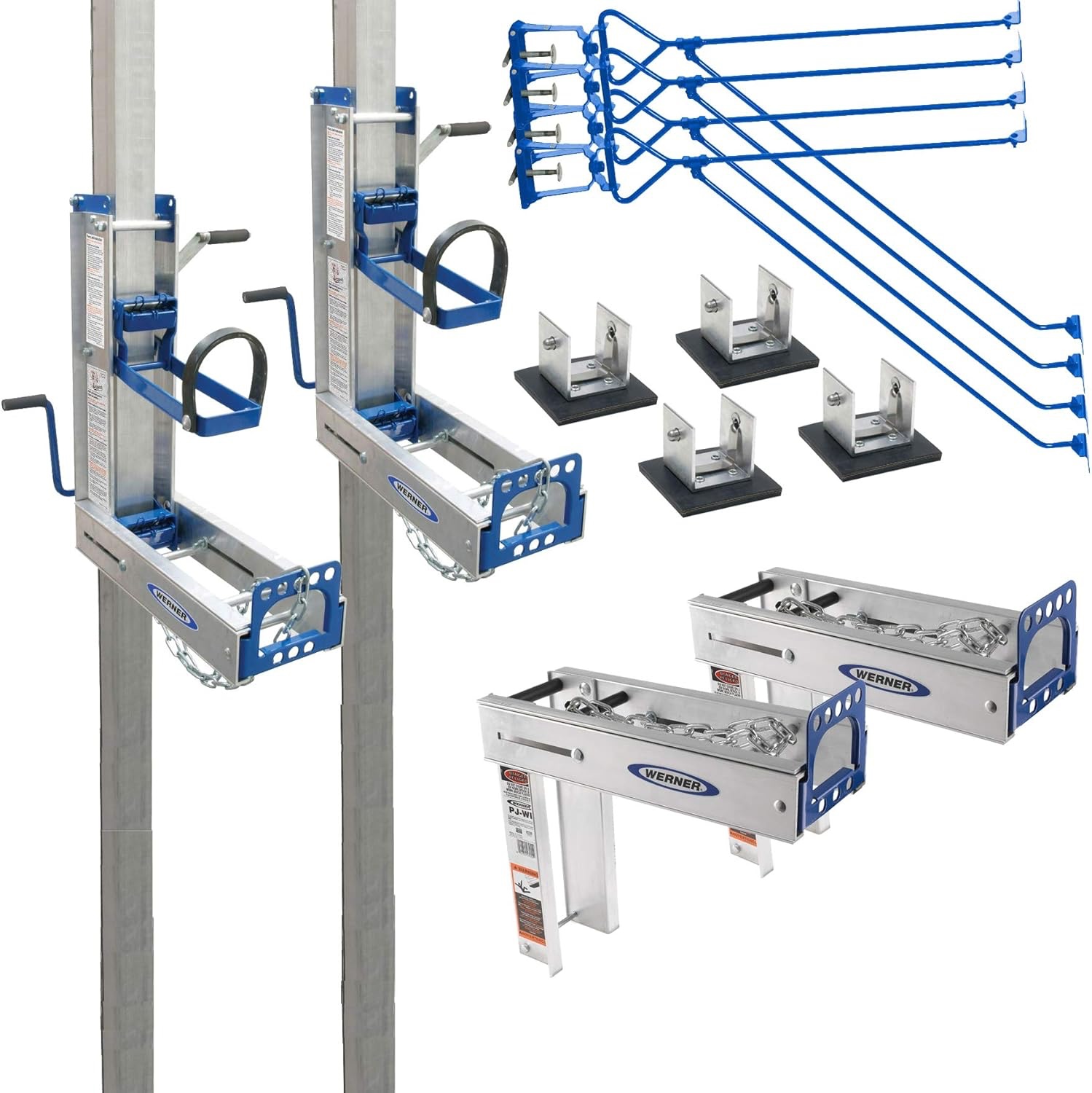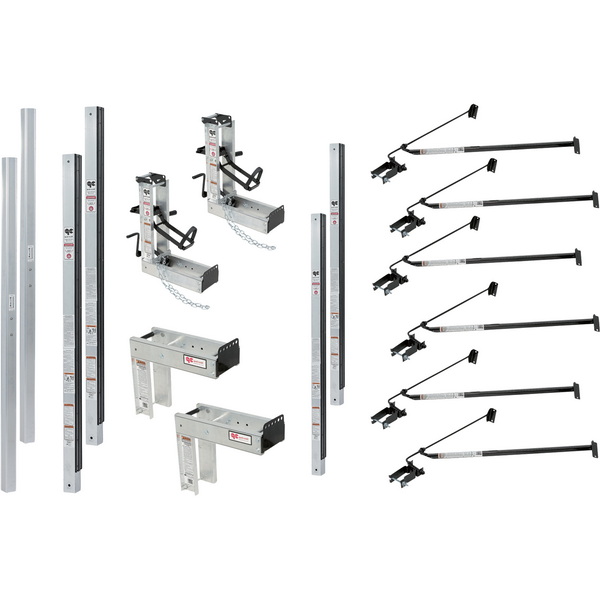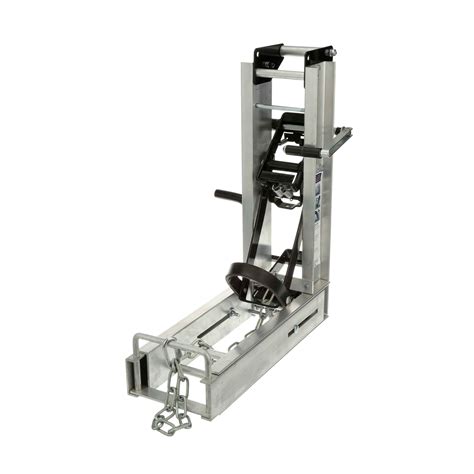Content Menu
● What is an Aluminum Pump Jack Scaffolding System?
● Key Components
● Step-by-Step Guide to Setting Up an Aluminum Pump Jack Scaffolding System
>> 1. Gather Your Equipment
>> 2. Position and Secure the Poles
>> 3. Install the Pump Jack Brackets
>> 4. Place Scaffold Planks
>> 5. Test the System
● Lightweight Materials Aid Setup
● Modular and Adjustable Design
● Minimal Tools Required
● Safety Features Simplify Compliance
● Learning Curve and Training
● Common Challenges and Tips for a Smooth Setup
● Safety Tips for Aluminum Pump Jack Scaffolding Systems
● Conclusion
● FAQ
>> 1. How long does it typically take to set up an aluminum pump jack scaffolding system?
>> 2. Can one person safely set up an aluminum pump jack scaffolding system?
>> 3. What tools are needed to assemble the system?
>> 4. How do you ensure the scaffold platform stays level during use?
>> 5. Is the aluminum pump jack scaffolding system suitable for uneven terrain?
● Citations:
An aluminum pump jack scaffolding system is a popular choice for contractors, painters, and maintenance professionals who require a versatile, portable, and adjustable working platform. Its design allows for quick height adjustments and easy transport, making it ideal for tasks such as siding, painting, insulation, and exterior repairs. This article provides a comprehensive, step-by-step guide on how easy it is to set up an aluminum pump jack scaffolding system.

What is an Aluminum Pump Jack Scaffolding System?
An aluminum pump jack scaffolding system consists of vertical aluminum poles, adjustable pump jack brackets, and scaffold planks that create a stable work platform. The pump jack brackets slide up and down the poles and are raised or lowered by pumping a foot lever, allowing workers to adjust the platform height without dismantling the entire scaffold.
Key Components
- Aluminum Poles: Lightweight yet strong poles available in various lengths (commonly 6, 12, 18, 24 feet).
- Pump Jack Brackets: Adjustable brackets that clamp onto the poles and support the scaffold planks.
- Scaffold Planks: Aluminum or wood planks that rest on the brackets to form the work platform.
- Support Braces: Braces that secure the poles to the building structure for stability.
- Base Plates or Pole Anchors: Provide a stable foundation for the poles on different surfaces.
Step-by-Step Guide to Setting Up an Aluminum Pump Jack Scaffolding System
1. Gather Your Equipment
Before starting, ensure you have all necessary components and safety gear:
- Aluminum poles (check for dents or damage)
- Pump jack brackets with foot levers and locking pins
- Scaffold planks (aluminum or wood)
- Support braces and screws (minimum 1/4" x 3" type AB screws)
- Base plates or pole anchors
- Safety harnesses, guardrails, and toeboards
2. Position and Secure the Poles
- Place the aluminum poles vertically against the work surface, spaced according to the length of your scaffold planks (typically 6 to 8 feet apart).
- Ensure the rubber pad on the bottom of each pole faces the ground for grip.
- Use base plates on hard, level surfaces or pole anchors on soft or uneven ground to stabilize the poles.
- Attach support braces to the poles and secure them firmly to the building structure using screws. Braces should be installed both near the top and bottom of each pole and at intervals no greater than 10 feet for additional stability.
3. Install the Pump Jack Brackets
- Place the pump jack bracket on the pole with the platform support arm facing the work surface.
- Slide the bracket down the pole until it reaches the desired height.
- Secure the bracket by engaging the foot lever: place your foot in the stirrup and pump to raise the bracket incrementally.
- Lock the bracket in place using cotter pins or locking nuts to prevent accidental lowering.
- Repeat this process for each pole.
4. Place Scaffold Planks
- Lay the scaffold planks across the pump jack brackets, ensuring full support on both ends.
- Planks should be securely fastened or locked to prevent movement.
- If multiple planks are used side-by-side, overlap or secure them according to OSHA guidelines.
- Install guardrails and toeboards on the platform edges to prevent falls and dropped tools.
5. Test the System
- Slowly pump the foot levers to raise and lower the platform, ensuring smooth movement and stability.
- Check for any wobbling or shifting of poles and braces.
- Confirm that all locking mechanisms and braces are secure.
- Ensure the platform remains level during adjustments.

Lightweight Materials Aid Setup
The use of aluminum poles and components significantly reduces the weight of the system compared to traditional steel scaffolding. This makes the system easier to transport and maneuver on site, even for smaller crews or solo workers.
Modular and Adjustable Design
The pump jack brackets slide smoothly along the poles and can be raised or lowered with a simple foot pumping action. This modularity allows workers to adjust the platform height quickly without dismantling the scaffold, saving time and effort.
Minimal Tools Required
Setting up an aluminum pump jack scaffolding system generally requires only basic hand tools such as a drill for securing braces and a wrench for tightening bolts. The pump jack brackets come with built-in locking mechanisms that do not require complex assembly.
Safety Features Simplify Compliance
Built-in safety features such as locking pins, guardrails, and toeboards simplify compliance with OSHA regulations. The system's design encourages safe practices and reduces setup errors.
Learning Curve and Training
While the system is designed for ease of use, proper training is essential to ensure safe setup and operation. Many manufacturers provide detailed instructions, videos, and customer support to assist new users.
Common Challenges and Tips for a Smooth Setup
- Uneven Ground: Use pole anchors or adjustable base plates to stabilize poles on soft or uneven surfaces.
- Securing Braces: Ensure braces are firmly attached to the building structure with appropriate fasteners to prevent scaffold movement.
- Platform Leveling: Raise pump jack brackets evenly on all poles to maintain a level work platform.
- Weight Limits: Do not overload the scaffold platform; adhere to manufacturer load ratings and OSHA guidelines.
- Weather Conditions: Avoid setup or use during high winds or storms to prevent accidents.
Safety Tips for Aluminum Pump Jack Scaffolding Systems
- Always inspect poles, brackets, and planks for damage before use.
- Use fall protection equipment such as harnesses when working at height.
- Never exceed the recommended number of workers on the platform (usually two per stage).
- Keep the work platform free of debris and tools that could cause tripping.
- Follow manufacturer and OSHA guidelines strictly.
Conclusion
Setting up an aluminum pump jack scaffolding system is generally straightforward, efficient, and safe when proper procedures are followed. Thanks to lightweight materials, modular design, and easy-to-use pump jack brackets, even small teams can assemble and adjust the system quickly on-site. The minimal tools required and built-in safety features further simplify the process, making it an excellent choice for a variety of construction, painting, and maintenance projects.
With adequate training and adherence to safety standards, the aluminum pump jack scaffolding system offers a versatile and reliable platform that saves time and labor costs while providing a secure working environment.

FAQ
1. How long does it typically take to set up an aluminum pump jack scaffolding system?
Setup time varies depending on experience and system size but generally takes between 30 minutes to 2 hours for a basic two-pole system.
2. Can one person safely set up an aluminum pump jack scaffolding system?
While possible, it is safer and more efficient to have at least two people during setup to handle poles, braces, and platform placement.
3. What tools are needed to assemble the system?
Basic hand tools such as a drill, wrench, and screwdriver are usually sufficient. The pump jack brackets require no special tools for height adjustment.
4. How do you ensure the scaffold platform stays level during use?
Raise or lower the pump jack brackets evenly on all poles and use a level to check the platform before starting work.
5. Is the aluminum pump jack scaffolding system suitable for uneven terrain?
Yes, with the use of pole anchors and adjustable base plates, the system can be stabilized on soft or uneven ground.
Citations:
[1] https://www.metaltech.co/wp-content/uploads/2022/08/Instructions-Pump-Jack-System-EN.pdf
[2] https://falconladder.com/content/PUMPJACK/Pump-Jack-System-Instructions.pdf
[3] https://www.youtube.com/watch?v=BUAO-ZQYZ_k
[4] https://www.alumapole.com/images/AlumapoleSetUpInstructEng032011.pdf
[5] https://scaffoldingrentalandsales.com/blog/-how-to-properly-set-up-and-dismantle-a-pump-jack-system/
[6] https://www.youtube.com/watch?v=b4JTSY5e7zk
[7] https://www.badgerladder.com/pdfs/titan-safety-instructions.pdf
[8] https://www.youtube.com/watch?v=Ac3L_7W0gbY
[9] https://images.thdstatic.com/catalog/pdfImages/01/012d6c7e-30c0-4690-b60e-170259e30fdf.pdf
[10] https://pdf.lowes.com/productdocuments/678382fc-ebff-4210-9467-33700c3f5bb9/61751388.pdf






















